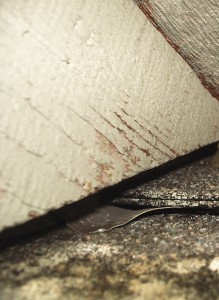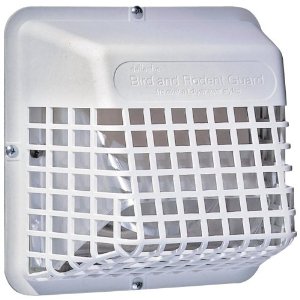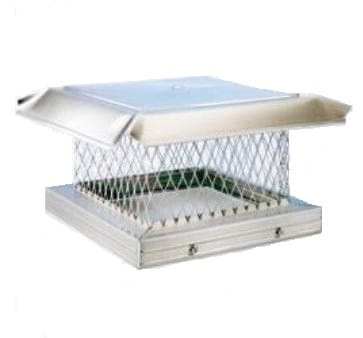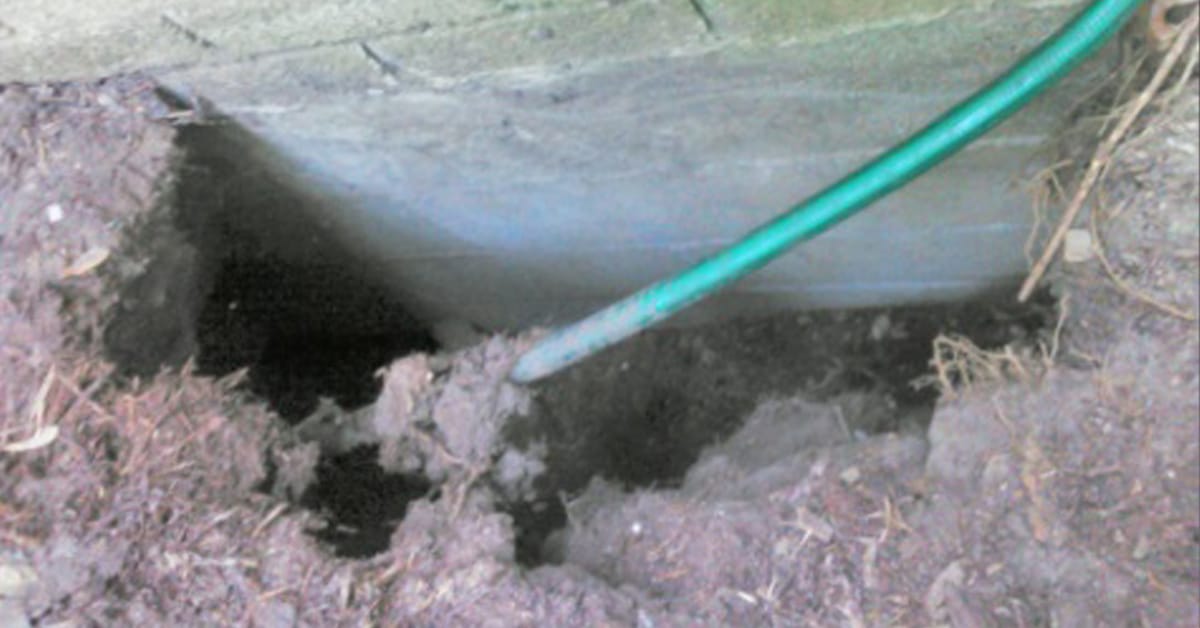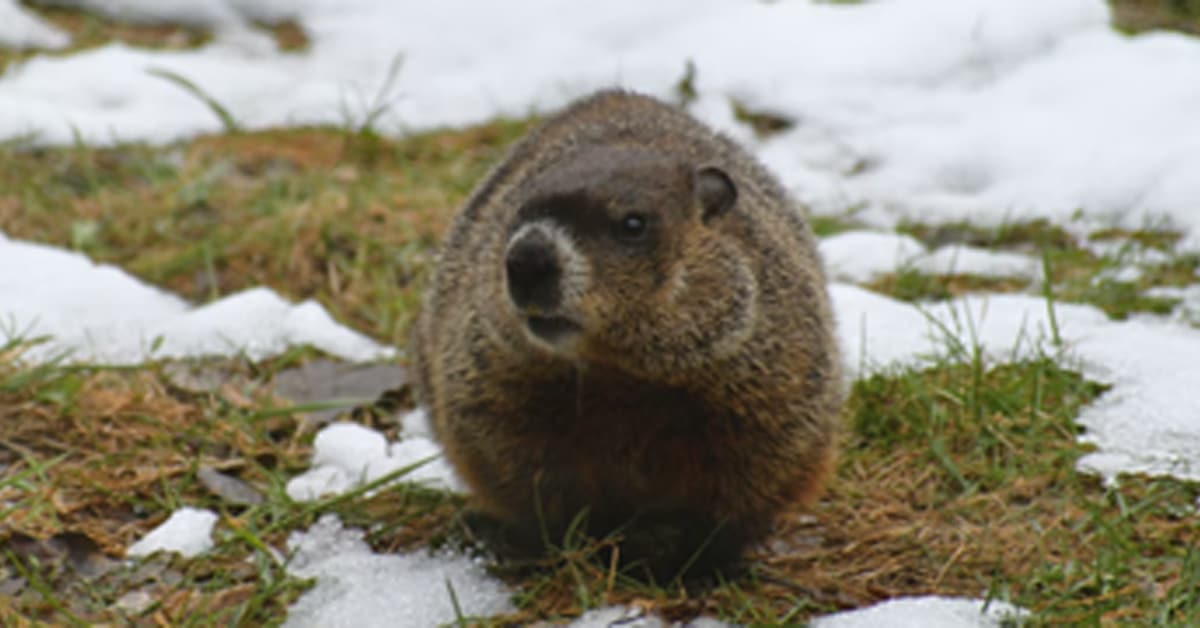Groundhogs may look cute, but groundhog foundation damage is more serious than you think. While…
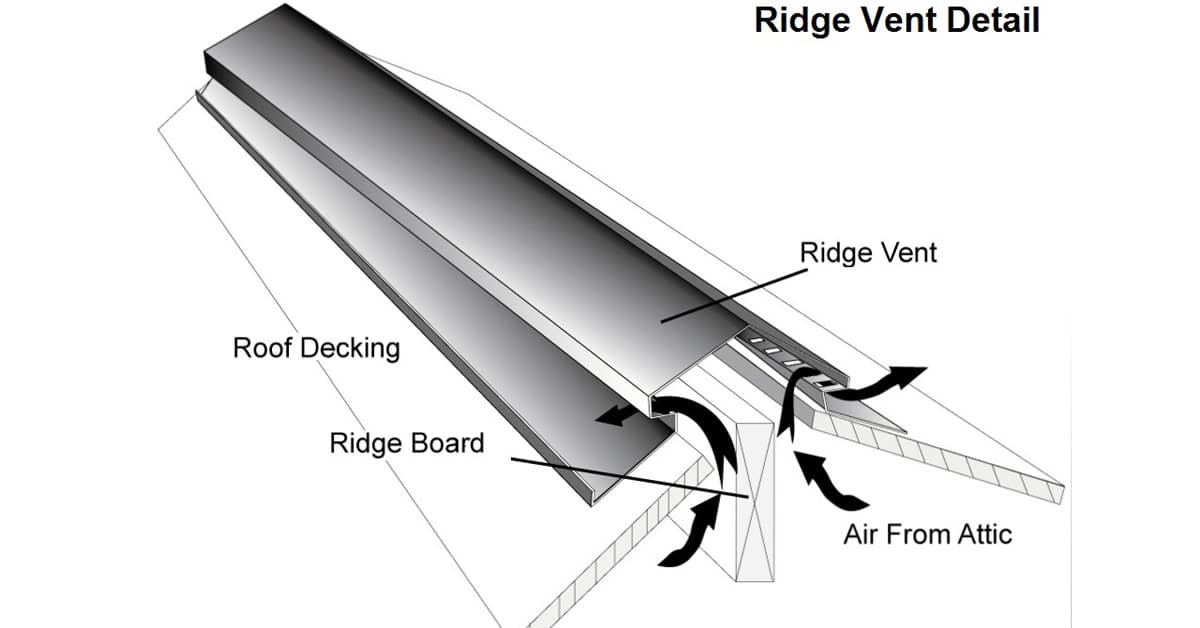
Prevention: Stopping Wildlife Problems Before They Start
The best way to deal with a wildlife problem is to prevent one from happening in the first place. While there is no way to create a home that is 100% impervious to animals and insects, there are several things you can do to ensure that you do not unintentionally create conditions conducive to a wildlife problem. In this article, we will discuss different strategies for nuisance wildlife prevention around the home.
Preventative Maintenance
There are various ways animals get into the home. Mice come in through gaps around the foundation; bats can enter an attic through soffits, ridge vents, and behind siding that is not firmly attached. Squirrels and raccoons are ingenious in the ways they can get in. The good news is that animal entry points are big enough that they can usually be sealed without too much difficulty. In many cases, this is simply a routine maintenance issue: if you keep up on the general maintenance of your home’s exterior, you are going a long way to solve the problem proactively.
But no matter how attentive you are to maintenance issues, an animal can always take you by surprise and get in at a spot you might not have even considered. What are some of these common areas to watch out for?
Ridge Vents
A ridge vent is a vent that runs the entire length of your roof peak. Its purpose is to ventilate your attic. Sometimes they are covered with shingles to blend them in with the roof. Many ridge vents are made of plastic, which can warp and bend over time. A bent ridge vent is a prime entry point for bats. If your ridge vent is exposed, it is not too difficult to climb up and see if the vent has begun to warp and bend. If the vent is covered by shingling, it may be more difficult to ascertain. If you have a plastic ridge vent that has not been replaced in at least ten years, you may want to consider taking a look at it and replacing it if it has started to warp.
Construction Gaps
A construction gap is an opening where two sections of the roof come together. They may not be noticeable; sometimes they are only a half inch wide. These gaps can provide entry points to your attic for bats and sometimes squirrels. In order to locate construction gaps, you will need to really closely study the areas where different sections of the roof come together. There are various ways to seal these gaps; hardware cloth, copper mesh, or flashing are the most common methods, depending on the aesthetics of your house. If the construction gap is in a location not visible from the ground, caulk or expanding foam are also options. It is important to note that the presence of construction gaps does not mean your roof was built improperly. Roofers are simply not wildlife controllers, and just because a roof is done properly according to standards of safety and durability does not mean it is capable of excluding wildlife. It is also important to realize that because construction gaps are normal in roof construction, your roof need not be old to have construction gaps. Our technicians find construction gaps all the time in homes less than five years old.
Siding
Aluminum siding is the most common way to finish the exterior of a home. If siding comes unattached or begins to pull away, however, it can allow animals and insects an entry point into your home. Siding is attached to your home by nails or screws. It may often begin to pull away around the corners of the house, where powerful winds over many years may loosen the nails. Siding hanging off the side of a home should be reattached as quickly as possible. Squirrels will latch on to loose siding and use it as a foothold to get up onto the roof, or depending on where the loose piece is hanging, inside the attic. Raccoons are even worse; they will not only latch onto loose siding, but can use their hands to rip it even further in order to make an entry point. This is especially a danger if the siding pulled away is near an attic vent. Make sure siding is secure, especially near the corners of the house.
Siding that is not screwed down properly in the center can also be a problem. If siding is not sufficiently attached along the center, the extra slack may allow bats to wriggle their way underneath it and up into the attic space. Siding should be attached securely throughout its entire length. Not that siding is supposed to be absolutely tight; siding will expand and contract with temperature changes, so there is supposed to be a little bit of play with each piece (maybe 1/4″ to 1/2″ at the most), but the point is to make sure the siding is secured uniformly and that there are no areas where it is pulling away or has too much play.
Vents
Bird Guard Any vent may provide an entry point for an animal. The most common vents used to gain access to a home are attic vents and dryer vents. Dryer vents are ideal nesting sites for birds such as starlings. These vents should be protected with vent guards to exclude birds from nesting there. This is especially true of vents from second story bathrooms. Attic vents should be screened off on the inside with mesh or hardware cloth so prevent squirrels or bats from getting in them. It also happens that the vent frame itself can pull away from the house, leaving a gap that animals can get through; this is a favorite entry point for raccoons. If your vent frame is dilapidated, the vent itself may need to be replaced. Make sure the area between the vent and the house is tight.
Masonry Gaps & Chimney Caps
A masonry gap is any place where there is a gap between bricks or cinder blocks, or when there is a gap between a brick structure and the rest of the house. Besides the foundation, the most common place for masonry gaps is around the chimney. If the mortar on your brickwork has deteriorated, you will need tuck-pointing, which is the replacing of mortar between bricks. Spot tuck-pointing is not difficult to do if you are working with just the top of a chimney, but if your entire house is brick and in need of tuck-pointing, this can be some serious and involved maintenance. Besides extending the life of your brickwork, tuck-pointing will deter wasps and yellow-jackets from nesting in holes between bricks.
If you are working on your chimney brickwork, you may also want to consider a chimney cap. Chimney caps allow unrestricted airflow through the chimney while providing a defense against animal entry into the chimney. Birds, squirrels, raccoons will often get into chimneys. A chimney cap makes this impossible. Make sure your chimney cap is fitted properly by carefully measuring the chimney top. The most common chimney measurement is 12″ x 12″. Chimney caps of these size are readily available at your local hardware stores. Make sure you get one that is made of stainless steel; galvanized steel caps are not as durable as stainless steel. If your chimney has an irregular measurement, you may need to custom order a chimney cap. Creature Control technicians are also able to measure, order, and install chimney caps for you.
Foundation Cracks
Foundation cracks provide entry points for rodents. Cracks can be sealed with caulk or concrete. Other entry points into the foundation, such as vents, should be screened with mesh. Window wells should be tightly fitted and secured around the sides with caulk if necessary.
Creature Control Related Services
All of this can be a lot for a homeowner. And in many cases, a homeowner may not be aware that his house has animal entry points until an animal is already there. Calls for related services often go hand in hand with animal removal. Creature Control provides a whole host of services related to wildlife problems. Feel free to contact Creature Control for further information on preventative maintenance and wildlife removal for your home and property.
